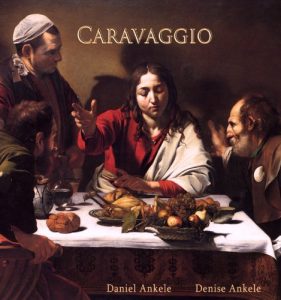(Revised 11/2014 - 215+ HD Paintings with annotations, biography and now compatible with the latest Kindle, Kindle for iOS and Android devices.)
HOKUSAI Art Book contains 215+ HD Reproductions of paintings and woodblock prints of Japanese geisha's, theater, animals, landscapes, flowers and genre scenes with annotations, biography, table of contents and top 50 museums of the world. eBook is compatible with all Kindle devices, Kindle for iOS and Android tablets (use rotate and/or zoom feature on landscape/horizontal images for optimal viewing).
(See our other Hokusai art book for his 100 Poems by 100 Poets & Thirty-six views of Mount Fuji prints.)
The Japanese artist best-known as Katsushika Hokusai was born in Edo (now part of Tokyo) on what is commonly accepted as October 31, 1760. His family were artisans, with a mirror-making business in the Katsushika district. As early as five years old his passion for art was evident. Once he began working polishing mirrors for the family business at the age of six, he could often be found after-hours, studying and copying the painted designs from the backs of the mirrors onto scraps of wrapping paper.
When he was twelve, Hokusai went to work at a Japanese lending library. These were popular institutions at the time, providing entertainment in the form of books made from wood-cut blocks which, for a fee, were read by the middle and upper classes. By fourteen, he was apprenticed to a wood-carver, and then at the age of eighteen, he entered the studio of Katsukawa Shunshō, who was a member of the ukiyo-e school of artists. These artists focused on a specific style of wood-block prints and painting, and Shunshō was the head of the “Katsukawa” school. From Shunshō Hokusai would learn and eventually master ukiyo-e, which at that time focused on images of the actors and courtesans of the day. It was here that he would also make the first of at least thirty changes to his name during his lifetime; this time, to “Shunrō,” which was a respectful way of identifying him as a student of Shunshō. Under this name, he produced his first series of prints, images of popular Kabuki actors. Also during this time he met and married his first and second wives, both of whom died young. With them he had two sons and three daughters. His youngest daughter Sakae, later known as Ōi, followed in her father’s footsteps and became an artist herself.
In 1793, Shunshō died, and Hokusai then began to expand his artistic exploration, including attempting European styles from French and Dutch copper engravings he acquired. This deviation from traditional ukiyo-e methods led to his expulsion from the Katsukawa school by Shunkō, who was the highest-ranking disciple of Shunshō. As humiliating as this was, Hokusai was later to credit this expulsion with the true development of his artistic style. (cont.)
HOKUSAI Art Book contains 215+ HD Reproductions of paintings and woodblock prints of Japanese geisha's, theater, animals, landscapes, flowers and genre scenes with annotations, biography, table of contents and top 50 museums of the world. eBook is compatible with all Kindle devices, Kindle for iOS and Android tablets (use rotate and/or zoom feature on landscape/horizontal images for optimal viewing).
(See our other Hokusai art book for his 100 Poems by 100 Poets & Thirty-six views of Mount Fuji prints.)
The Japanese artist best-known as Katsushika Hokusai was born in Edo (now part of Tokyo) on what is commonly accepted as October 31, 1760. His family were artisans, with a mirror-making business in the Katsushika district. As early as five years old his passion for art was evident. Once he began working polishing mirrors for the family business at the age of six, he could often be found after-hours, studying and copying the painted designs from the backs of the mirrors onto scraps of wrapping paper.
When he was twelve, Hokusai went to work at a Japanese lending library. These were popular institutions at the time, providing entertainment in the form of books made from wood-cut blocks which, for a fee, were read by the middle and upper classes. By fourteen, he was apprenticed to a wood-carver, and then at the age of eighteen, he entered the studio of Katsukawa Shunshō, who was a member of the ukiyo-e school of artists. These artists focused on a specific style of wood-block prints and painting, and Shunshō was the head of the “Katsukawa” school. From Shunshō Hokusai would learn and eventually master ukiyo-e, which at that time focused on images of the actors and courtesans of the day. It was here that he would also make the first of at least thirty changes to his name during his lifetime; this time, to “Shunrō,” which was a respectful way of identifying him as a student of Shunshō. Under this name, he produced his first series of prints, images of popular Kabuki actors. Also during this time he met and married his first and second wives, both of whom died young. With them he had two sons and three daughters. His youngest daughter Sakae, later known as Ōi, followed in her father’s footsteps and became an artist herself.
In 1793, Shunshō died, and Hokusai then began to expand his artistic exploration, including attempting European styles from French and Dutch copper engravings he acquired. This deviation from traditional ukiyo-e methods led to his expulsion from the Katsukawa school by Shunkō, who was the highest-ranking disciple of Shunshō. As humiliating as this was, Hokusai was later to credit this expulsion with the true development of his artistic style. (cont.)












